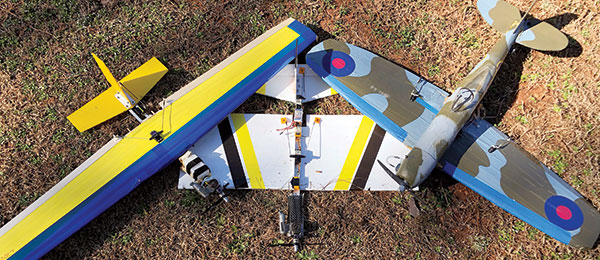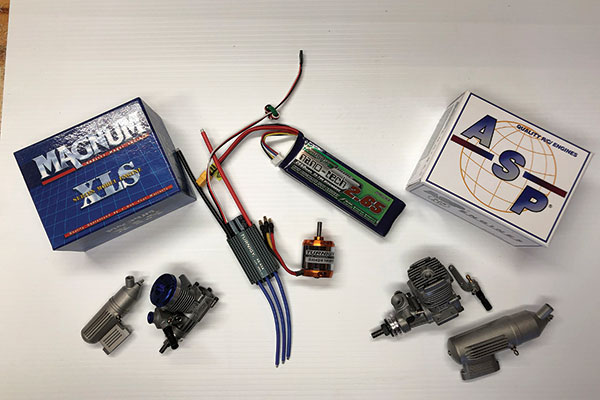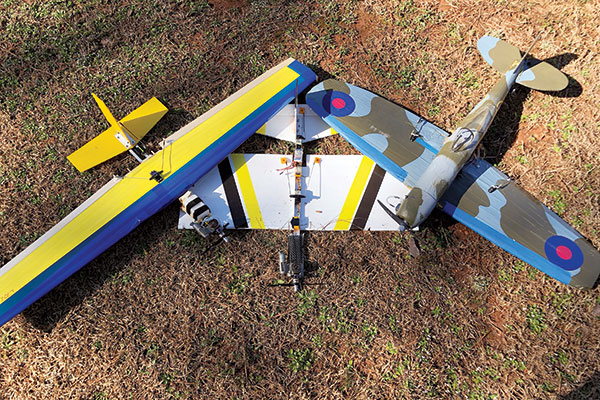Learning about RC Combat

Written by Don Grissom RC Combat Column As seen in the May 2018 issue of Model Aviation.
It is hard to imagine that it has been more than 15 years since I started flying RC Combat. I had only been flying for a few years when one day I noticed some pilots at my flying club who were playing around with streamers. I saw how much fun they were having and became hooked. One of my club members, Don Pruitt, invited me to his house, where he helped me build some of the first airplanes that I used for Combat. I ended up going that first year (2004) to the Nats in Muncie, Indiana, and I have attended nearly every year since. The basics of RC Combat are that you pull a 30-foot streamer in the air and get points for cutting other pilots’ streamers, as well as for keeping your own intact. You also get points based on getting up into the air on time and surviving the round of Combat. A round of Combat lasts 5 minutes, with 1 1/2 minutes to get started and in the air. Most contests generally consist of approximately six to 10 rounds of Combat per event. If you have more than seven or eight people, you will normally break into multiple heats per round to limit the number of airplanes in the air. It is always great if you can have other nonflying members to judge each pilot, or, if you are flying multiple heats, you might need to judge when you’re not flying. One of the most important things when you’re a beginner in this event is to have people who can help you build and maintain the airplanes that you will be flying. I am frequently asked what the best airplane is or what kit I would use, which normally leads me to recommend the following.

The power setups that the author currently uses are (L-R) a Magnum XLS .15 engine (which is no longer produced, but ASP makes a similar one), a Turnigy SSC electric motor (which will work for other classes with a different battery), and an ASP .25 nitro engine.
I would first tell the newcomer to contact someone in his or her area who is already flying Combat and see what he or she is flying. This way you can get help with construction and with what you will need to repair airplanes when they get damaged. Unlike when I got started in Combat, there are not many manufacturers that make Combat kits. This leads many pilots to make their own airplanes from materials they can easily acquire. If you are unable to get any help locally, you can get online help via the RC Combat forums, or Facebook groups can help get you started. There are currently six classes of RC Combat that are flown across the country. Knowing what you want to compete in can help you decide what airplanes you want to build. If you plan to start flying RC Combat in your club and do not want an initial large investment in airplanes and equipment, I would suggest starting with GNat Combat. GNat airplanes are simple in design and most parts can be found at your local hardware store. The plans for the airplanes are online. This would be a great way to get club RC Combat going. The next two classes are the Limited classes, which are Slow Survivable Combat (SSC) and Limited B. SSC is the most popular Combat series in the country and is normally flown at most events. Limited B is also popular because it provides more power, but not as much speed as is typical in an open class. The next class of Combat is Open B, which is mostly flown at larger events that last several days. Finally, there are the two Scale classes: 2610 and 2948. The 2610 Scale class is mostly contested in the northwest part of the country where it has been flown for many years. The 2948 Scale class is flown throughout the rest of the country and at the Nats every year. Scale is one of my favorite types of Combat, although the build time that is required and the repairs are not for beginners.

Common RC Combat airplanes are (L-R) the SSC Lethal Weapon, the GNat, and the 2948 Scale Combat airplane, which was originally designed by the late Chris Handegard.
One of the big decisions when you start flying Combat is to determine which type of powerplant you want to use in your airplanes. For many years, the only dependable type was a nitro engine. This was because of the durability and the cost of the equipment. Nitro engines normally last for many years and can take a beating when the airplane hits the ground and it gets covered with dirt. For most people, the biggest issue with nitro power is that the engines are much messier and they are becoming harder to obtain. Most airplanes of this size have begun using electric power systems, and the market has stopped producing so many smaller nitro engines. Another option is to use an electric power system. The advantages of electrics are that they are reliable, and you do not need to purchase messy fuel, but there are also issues with electrics. The upfront cost can be greater because you will need batteries, as well as chargers, to keep the aircraft going throughout the day. There is a durability issue because most electric motors will need to be cleaned if dirt or debris gets into them. A nitro-powered engine can normally be cleaned at the field, but an electric motor will sometimes need to be taken apart for cleaning. I just recently started using electric power systems and have found them to be a great option. The cost is starting to become more competitive, plus the reliability makes for a much better flying experience. If you want to learn more about RC Combat, I suggest visiting the RC Combat Association (RCCA) website, as well as joining the RC Combat Facebook group, which is also a great source of information. -Don Grissom [email protected]










1 comments
Magnum Engines
Add new comment